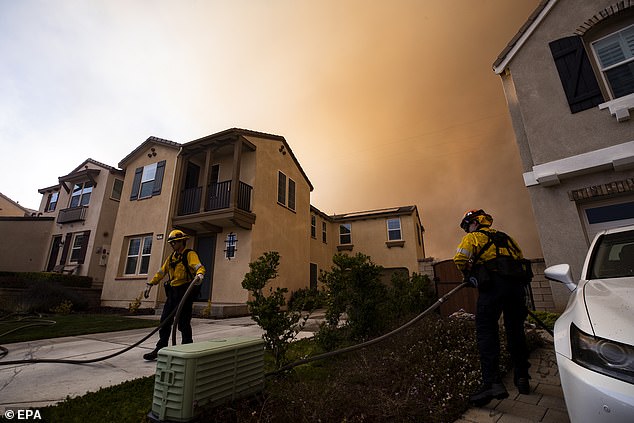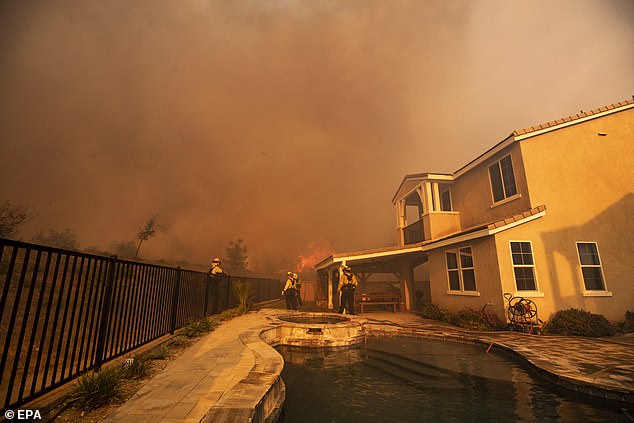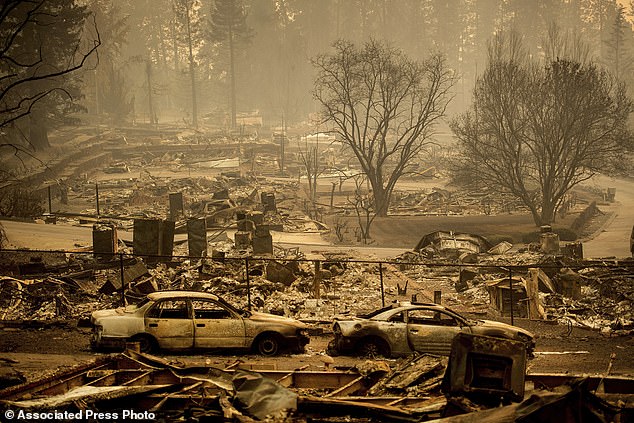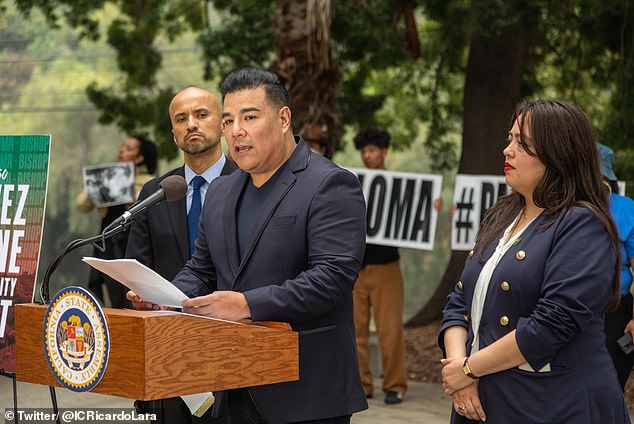A major insurance provider has issued an ultimatum to the entire state of California.
The company, State Farm General, asked the state Insurance Department on Thursday to allow it to raise home insurance rates for millions of citizens or see them move.
The move signals financial trouble for the insurance giant, which is currently covering homes razed by wildfires.
State Farm revealed it is seeking a 30 percent rate increase for homeowners, a 36 percent increase for condo owners and a 52 percent increase for renters as a result, a move that would only worsen the state’s already-present housing crisis.
“This has the potential to affect millions of California consumers and the integrity of our residential property insurance market,” Insurance Commissioner Ricardo Lara said in a statement as the documents are processed through the proper channels.
State Farm General has issued an ultimatum to the entire state of California, saying it is asking for a 30 percent rate increase for homeowners, a 36 percent increase for condo owners and a 52 percent increase for renters. If those demands are not met, the company could move out of state.

The move indicates that the insurance giant is in financial trouble as it is currently covering homes razed by the wildfires. Pictured is a row of houses in Long Beach, California.
He added that he was now keen to “get to the bottom” of the company’s financial situation and would conduct a thorough review before deciding on applications as a result.
“State Farm General’s latest rate filings raise serious questions about its financial condition,” he said of the No. 1 insurance company in the United States.
He added that a tariff hearing might even be necessary, offering his commission a chance to hear from the public about proposed tariff changes.
Only then, he said, would officials make a decision on whether to approve the applications, a process that could end up taking months.
Currently, the department averages 180 days for each rate review, with some cases taking even longer, a department spokesperson confirmed to the LA Times.
This is largely due to the massive amount of fires Californians have seen in recent years, with this year’s wildfire season already underway.
The California Department of Insurance had already approved two State Farm applications that caused citizens’ homeowners insurance rates to rise dramatically, including a 6.9 percent increase early last year and a 20 percent hike that began last March.
Just a few months later, the company is once again presenting itself to the state with its hat in hand, having been estimated at an approximate net worth of 143.2 billion dollars in 2021.

The California Department of Insurance had already approved two State Farm applications that caused citizens’ home insurance rates to rise dramatically, including a 6.9 percent increase early last year and a 20 percent hike that began last March.

Just a few months later, the company is once again in the state with its hands in its pockets, blaming the wildfires for its inability to foot the bill to cover the entire state.

The move signals financial trouble for the insurance giant, which currently covers homes razed by wildfires. Homes razed by the Camp Fire line a development on Edgewood Lane in Paradise, California, in 2018.
At the time, the company generated about $87.6 billion in annual revenue, and last February it issued a statement saying its net income for the previous year was an impressive $1.2 billion.
This represented an increase of more than 100 percent from the previous year, when the Illinois-based insurance provider reported $588 million in revenue.
However, such a measure is often a sign that the insurance company is experiencing difficulties, something that has not been seen before.
However, State Farm said in one of its filings that the purpose of its request was to restore its financial condition, offering the telling statement: “If the variation is denied, a further deterioration of the surplus is anticipated.”
The insurer added that it was “working toward long-term sustainability in California,” indicating a potential trouble spot among the locations it covers.
In March, State Farm said it had decided to drop 72,000 customers in the Golden State because of a crisis it said was occurring throughout the California insurance market, the week after it raised home insurance rates for California customers by 20 percent.
Lara, at the time, introduced new policies to address the “catastrophic modeling” that the industry seemed to desperately need given the state’s massive wildfire risk and climate change.

“This has the potential to impact millions of California consumers and the integrity of our residential property insurance market,” Insurance Commissioner Ricardo Lara said in a statement as the documents make their way through the proper channels.
The move allowed insurers like State Farm to use a more forward-looking model around their pricing policies rather than basing them solely on past trends, and while it was initially welcomed by the industry, the companies did not commit to returning to the state.
State Farm, however, is the first to reject the concept of automatic coverage in the state, which was subject to 7,127 fires in 2023.
That was slightly lower than the previous year, when 7,667 fires ravaged California, a relatively “quiet” year according to officials in terms of area.
A total of 8,835 fires were recorded in 2021, one of the highest numbers ever recorded.
Then, faced with “unprecedented fire conditions,” in the words of officials, the state suffered multiple fires such as the Dixie Fire, the McFarland Fire, the Caldor Fire and more.
In October, particularly susceptible northern regions were offered some respite when the state received its first rain in more than 200 days.
That ultimately reduced the risk of wildfires in much of the state, where wildfires occur at a much higher-than-average rate compared to the rest of the country.

He promised to conduct a thorough review before deciding on the applications, as California’s wildfire season is already underway.
“The rate changes are driven by rising costs and risks and are necessary for State Farm General to deliver on the promises the company makes every day to its customers,” the company said in a statement last week following their requests.
“We continue to look for ways to maintain competitive rates,” the company added, days after this year’s wildfire season officially came into effect.
The company previously attributed its earlier increases to a combination of wildfires and inflation, factors it said have increased its rebuilding costs along with the prices it pays for reinsurance purchased to boost its balance sheets.
These plans are purchased to protect the company from the astronomical costs created by weather catastrophes, as well as outdated state regulations.
State Farm cited these risk-makers when it announced more than 70,000 nonrenewals earlier this year, joining Farmers, Allstate and others that either did not underwrite or limited new policies in the notoriously volatile state.
Consumer advocates have challenged the claims, paving the way for a thorough investigation over the next few months by the state insurance department.

